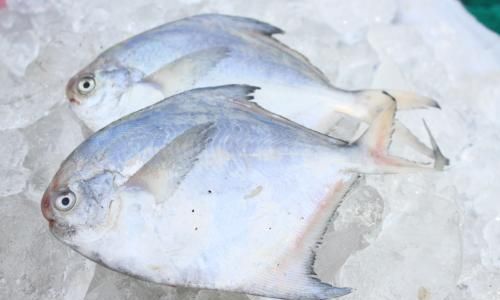Buying fresh fish is crucial for ensuring a delightful culinary experience, whether you’re preparing a sumptuous seafood dinner, a light sushi platter, or simply a quick and healthy meal. However, identifying fresh fish can be challenging, especially for those unfamiliar with the telltale signs. Freshness directly impacts the taste, texture, and safety of the fish, making it essential to know how to discern between a fresh catch and one that has been lingering too long. This comprehensive guide will equip you with the knowledge and skills necessary to confidently select the freshest fish at your local market or fishmonger.
Understanding Freshness Indicators
Before diving into the specifics, it’s essential to understand the fundamental principles behind assessing fish freshness. Freshness is primarily determined by the time elapsed since the fish was caught or harvested and how it has been handled and stored during that period. Fresh fish should exhibit certain characteristics that signify minimal decomposition and preservation of quality.

Appearance: The First Impression
The visual aspect is often the first clue in determining the freshness of fish. Here are some key visual indicators:
-
Color: Fresh fish typically have vibrant, lively colors. For instance, salmon should have a rich pink hue, while tuna should appear deep red. As fish begins to decompose, it loses its bright color and may develop a dull, grayish, or even slimy appearance. Discoloration, especially around the edges or gills, is a red flag.
-
Eyes: Clear, bulging eyes are a sign of freshness in many fish species. If the eyes are cloudy, sunken, or have a film over them, it suggests the fish has been out of water for too long.
-
Scales: Fresh fish have tight, shiny scales that adhere closely to the skin. Loose, dull, or falling-off scales indicate that the fish is not fresh.
-
Gills: The gills of a fresh fish should be red and moist. Dark, slimy, or sticky gills are indicative of decomposition.

-
Skin and Texture: The skin of fresh fish should be firm and elastic, springing back when pressed. A flabby or sagging skin texture is a sign of aging.
Odor: The Olfactory Test
Smell is another crucial sense when evaluating fish freshness. Fresh fish has a mild, oceanic scent, often described as “briny” or “clean.” As fish decomposes, it develops an unpleasant, ammonia-like odor, which becomes increasingly stronger over time. Trust your nose; if the fish smells fishy or offensive, it’s best to avoid it.
Firmness: The Tactile Check
Touch is another important method for assessing fish freshness. Here’s how to use it effectively:
-
Firmness: Fresh fish should feel firm to the touch. Press gently on the flesh; it should spring back quickly and maintain its shape. Soft, mushy, or dented areas indicate that the fish has lost its firmness due to decomposition.
-
Elasticity: When you press on the flesh of a fresh fish, it should feel resilient, almost bouncing back. Lack of elasticity is a sign that the fish is no longer fresh.

Moisture and Sliminess
The level of moisture and sliminess on the surface of the fish can also provide clues about its freshness:
-
Moisture: Fresh fish should have a moist, but not wet or slimy, surface. Excessive moisture or a slimy coating can be indicative of decomposition.
-
Dryness: While too much moisture is a bad sign, excessive dryness can also indicate that the fish has been out of refrigeration for too long, leading to moisture loss.
Checking the Packaging (for Packaged Fish)
If you’re buying packaged fish, there are additional considerations:
-
Date Labels: Always check the “use by” or “best before” dates on the packaging. While these dates are not foolproof indicators of freshness, they can provide a general guideline.

-
Packaging Integrity: Ensure the packaging is intact and has no leaks or punctures. This helps maintain the fish’s freshness and prevents contamination.
-
Ice Crystals: If the fish is packed in ice, look for ice crystals. Excessive ice crystals can mean that the fish has been frozen and thawed multiple times, which affects its quality.
Knowing Your Fishmonger
Establishing a relationship with a trusted fishmonger can be invaluable. A knowledgeable fishmonger can provide insights into the source of the fish, how long it has been since it was caught, and its handling and storage conditions. They can also offer recommendations based on your preferences and cooking plans.
Seasonality and Species
Understanding the seasonal availability of different fish species can also help you make better choices. Fish that are in season are generally fresher and more abundant, making them a better option than out-of-season species that may have been caught and frozen months ago.
Storage and Handling Practices
Once you’ve purchased fresh fish, proper storage and handling are crucial to maintain its freshness until you’re ready to cook. Here are some tips:

-
Refrigeration: Store fish immediately in the coldest part of your refrigerator, preferably on a bed of ice.
-
Consumption Time: Aim to consume fresh fish within one to two days of purchase for optimal quality and safety.
-
Proper Wrapping: Wrap fish tightly in plastic wrap or store it in an airtight container to prevent cross-contamination and moisture loss.
Conclusion
Mastering the art of selecting fresh fish involves a combination of visual inspection, olfactory assessment, tactile evaluation, and understanding the nuances of storage and handling. By paying attention to these details, you can ensure that your fish dishes are not only delicious but also safe to eat. Remember, the key to enjoying the best seafood lies in choosing the freshest catch possible. With this guide as your companion, you’ll be well-equipped to navigate the fish counter confidently and bring home the freshest fish for your culinary endeavors. Happy fishing!






0 comments